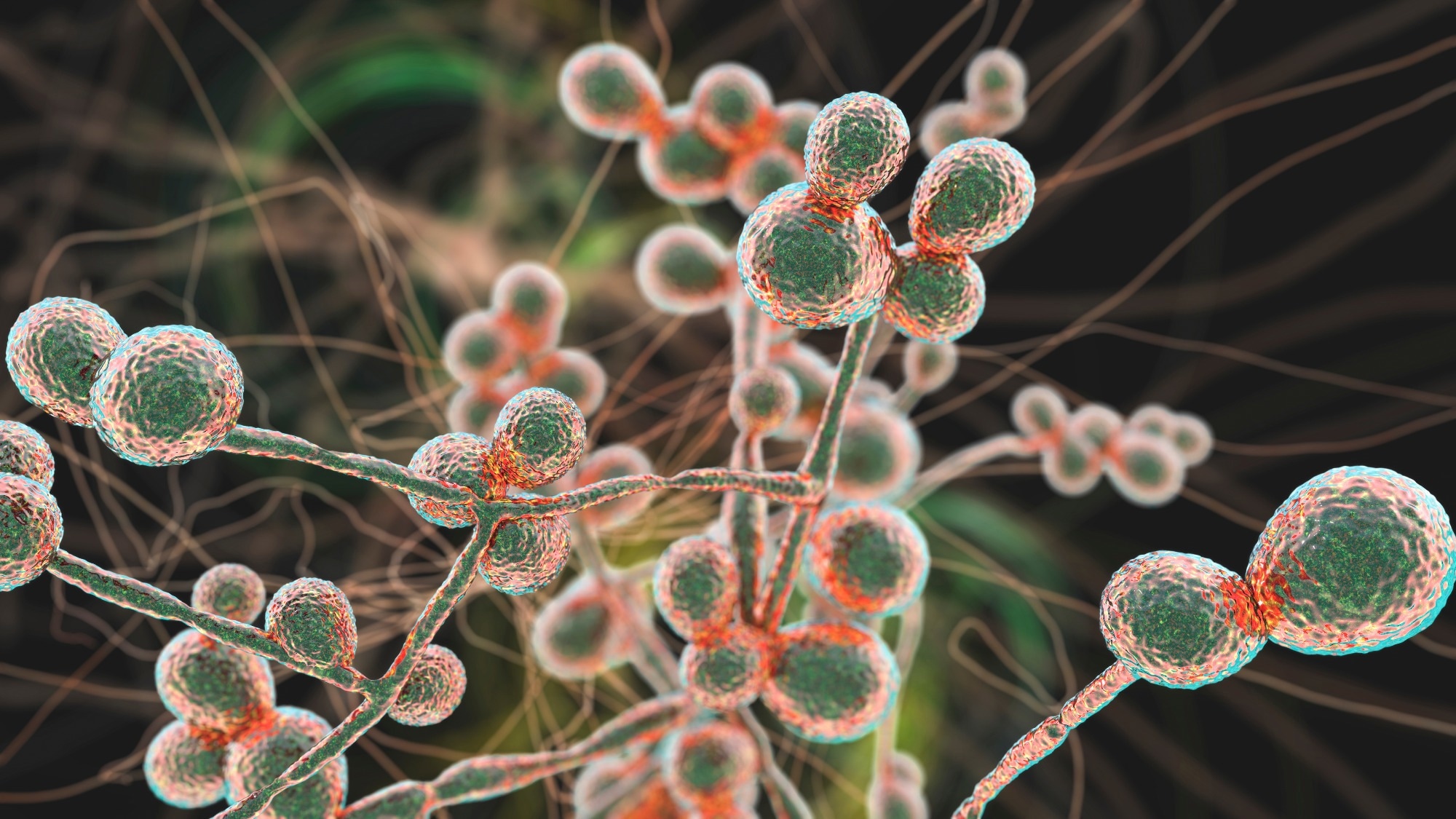Inflammatory bowel disease (IBD), which includes ulcerative colitis (UC) and Crohn’s disease (CD), is associated with mucosal inflammation that arises due to abnormal immune cell activation. A new study in Nature Medicine traces the sources of this type of inflammation to yeast cells.
 Study: Selection of cross-reactive T cells by commensal and food-derived yeasts drives cytotoxic TH1 cell responses in Crohn’s disease. Image Credit: Kateryna Kon / Shutterstock.com
Study: Selection of cross-reactive T cells by commensal and food-derived yeasts drives cytotoxic TH1 cell responses in Crohn’s disease. Image Credit: Kateryna Kon / Shutterstock.com
Introduction
IBD is characterized by abnormal immune responses causing inflammation of the gastrointestinal (GI) tract wall. These immune responses are driven by CD4+ T-cells reactive to gut microorganisms; however, their specific targets are unknown.
Since IBD causes chronic and significant illness and reduces patients’ quality of life, researchers have attempted to identify both the microbial targets and T-cell phenotypes involved in these conditions, especially as they may vary between subgroups.
T helper (TH) cells of the TH17 subtype are regulatory in function, as they modulate potentially harmful inflammatory immune responses to pathogens. The impairment of this function may arise due to higher levels of interleukin (IL)-17A-producing T-cells in the intestinal mucosa of patients with IBD. However, IL-17 antagonists have not been effective in CD and have worsened the condition in some patients.
TH17 cells may act differently in different situations. For example, if TH17 cells also express interferon (IFN)-γ or granulocyte-macrophage colony-stimulating factor (GM-CSF), these cells could become pathogenic rather than protective. Notably, IFN-γ-positive TH1 cells are always raised in the gut mucosa of CD but not UC patients.
Fungi are part of the gut microbiome, with yeast like Candida albicans, a key commensal microorganism that regulates the immune response. In fact, Candida albicans induces TH17 cells, thereby promoting the secretion of mucosal antibody immunoglobulin A (IgA) from the gut mucosa and systemic IgG antibodies.
It remains unknown if these yeast cells are the result or cause of inflammation in these patients. Notably, Saccharomyces cerevisieae, often referred to as ‘baker’s yeast’ antibodies (ASCA,) have been reported in the blood of CD patients and are capable of binding to C. albicans antigens.
The current study examined how yeast in the GI tract affects CD4+ T-cell responses and contributes to inflammation in CD.
What did the study show?
An increased CD4+ T-cell response caused by yeast reactivity was observed in CD patients. Between 50-60% of these patients exhibit ASCAs in their serum, which is considered a marker of disease severity.
Upon comparing IgA/IgG ASCA levels, a significant rise in T-cell reactivity to multiple yeasts in CD patients with ASCA was observed. This response was absent in ASCA-negative CD patients. Conversely, both CD subgroups responded strongly to the presence of C. albicans with T memory cell responses.
These yeast-reactive T-cells are also present in the inflamed gut mucosa of ASCA-positive CD patients but are absent in healthy tissues of the same patients and in all tissues from ASCA-negative individuals with CD. These T-cells exhibited increased reactivity to yeast species that are occasionally used to treat IBD as a probiotic but less so to C. albicans.
In ASCA-positive CD patients, an intense inflammatory yeast-reactive TH1 cell response was observed. These cells also secrete higher levels of IFN-γ, with this increased secretion more notable against fungi other than C. albicans. Inflammatory cytokines were also increased against certain yeasts.
In CD patients exposed to commensal or food-derived yeasts, yeast-reactive CD4+ T-cells developed a cytotoxic TH1 effector cell phenotype. This did not appear to be the result of a conversion of TH17 cells reactive to C. albicans into TH1 cells. Cytotoxic T lymphocytes (TH1 CTLs) from ASCA-positive CD patients were capable of killing gut epithelial cells.
Altered TH1-like phenotypes were observed in yeast-reactive CD4+ T-cells in close relatives of CD patients with IBD; however, these individuals were clinically unaffected. This may indicate a stage-wise development of cytotoxic capability, as the cells are presented repeatedly with yeast antigens due to the increased permeability of the gut mucosa previously reported in such individuals.
The importance of cytotoxic TH1 cell responses is likely attributed to their clonal expansion, coupled with their high reactivity to multiple yeast species, including those present at lower abundances. Thus, these clones are likely selected by repeated interactions with conserved antigens that remain unchanged across multiple yeast species.
This leads to abnormal CD4+ T-cell reactivity in CD patients. Being cross-reactive, these cells remain chronically activated in the presence of a range of yeasts, which leads to a cytotoxic phenotype. This accounts for the chronic nature and resistance to treatment seen in CD.
What are the implications?
Yeasts appear to contribute to a significant increase in TH1 cytotoxic cell responses that lead to the inflammatory immune response observed in a subgroup of CD patients. Further work is needed to identify the original cause of the TH1 response since C. albicans plays a homeostatic role in T-cell immunity and regulatory TH17 cell responses.
The chronic activation of these cells by various non-albicans fungi results in the clonal expansion of cross-reactive CD4+ TH1 cells that recognize conserved antigens in many yeasts. Both commensal and food-derived fungi may contribute to the eventual TH1 CTL response; however, TH17 cells reactive to C. albicans appear to resist such influences.
These yeast-reactive T-cells could provide therapeutic targets for the treatment of CD, perhaps by T-cell depletion or by T regulatory cells specific to these antigens.
This could reveal a general mechanism of how selection of cross-reactive T cells may allow adaptive immunity to cope with the enormous diversity of microbial antigens which, if not properly regulated, could come at the expense of fostering chronicity and contribution to therapy resistance in IBD due to persistent antigen activation.”
Journal reference:
- Martini, G. R., Tikhonova, E., Rosati, E., et al. (2023). Selection of cross-reactive T cells by commensal and food-derived yeasts drives cytotoxic TH1 cell responses in Crohn’s disease. Nature Medicine. doi:10.1038/s41591-023-02556-5.